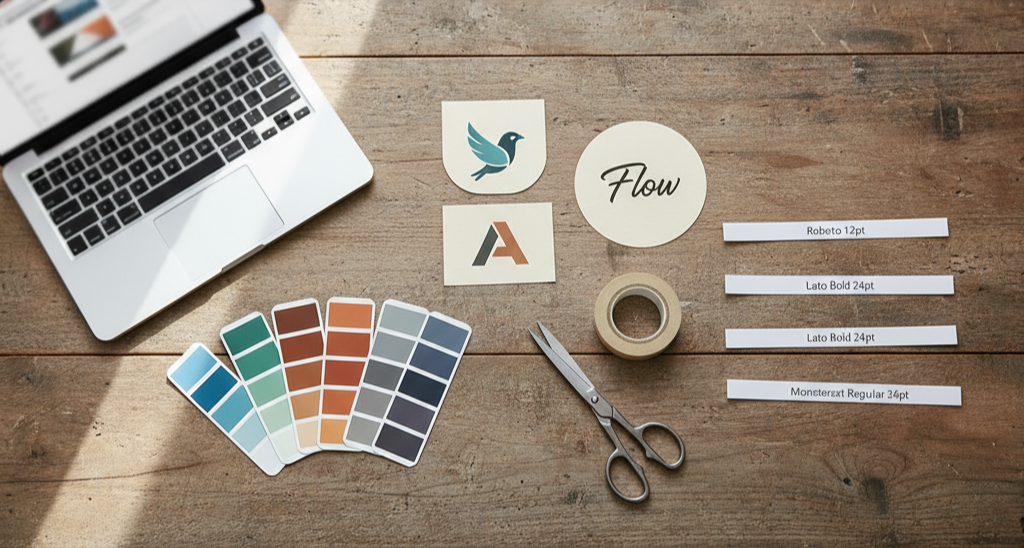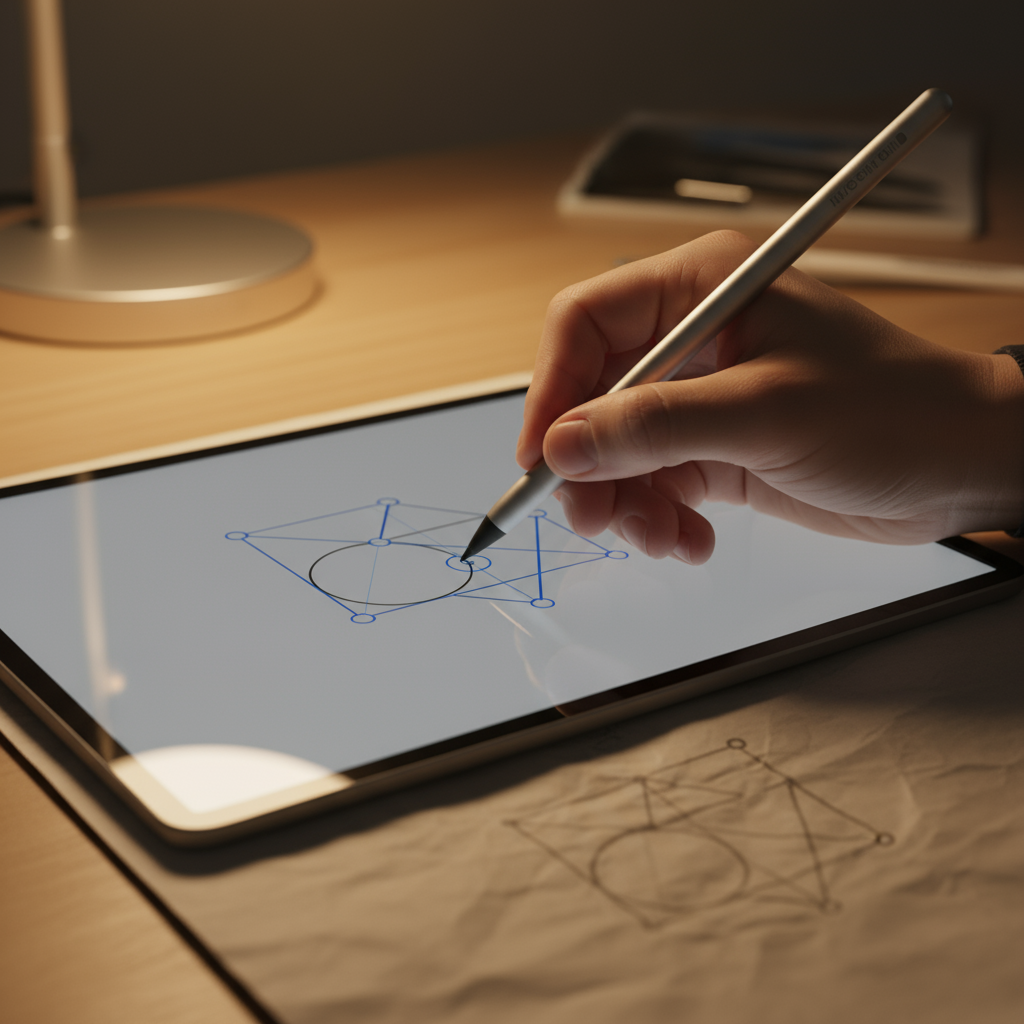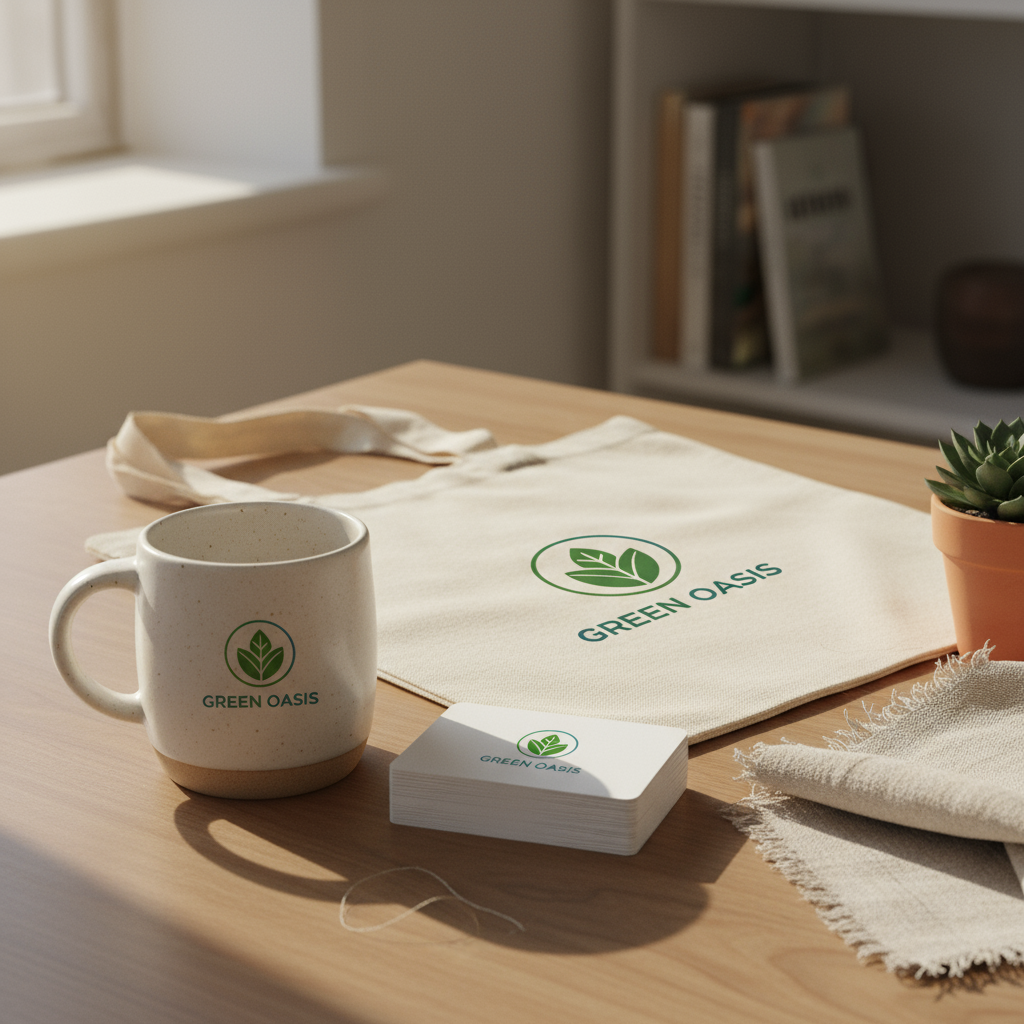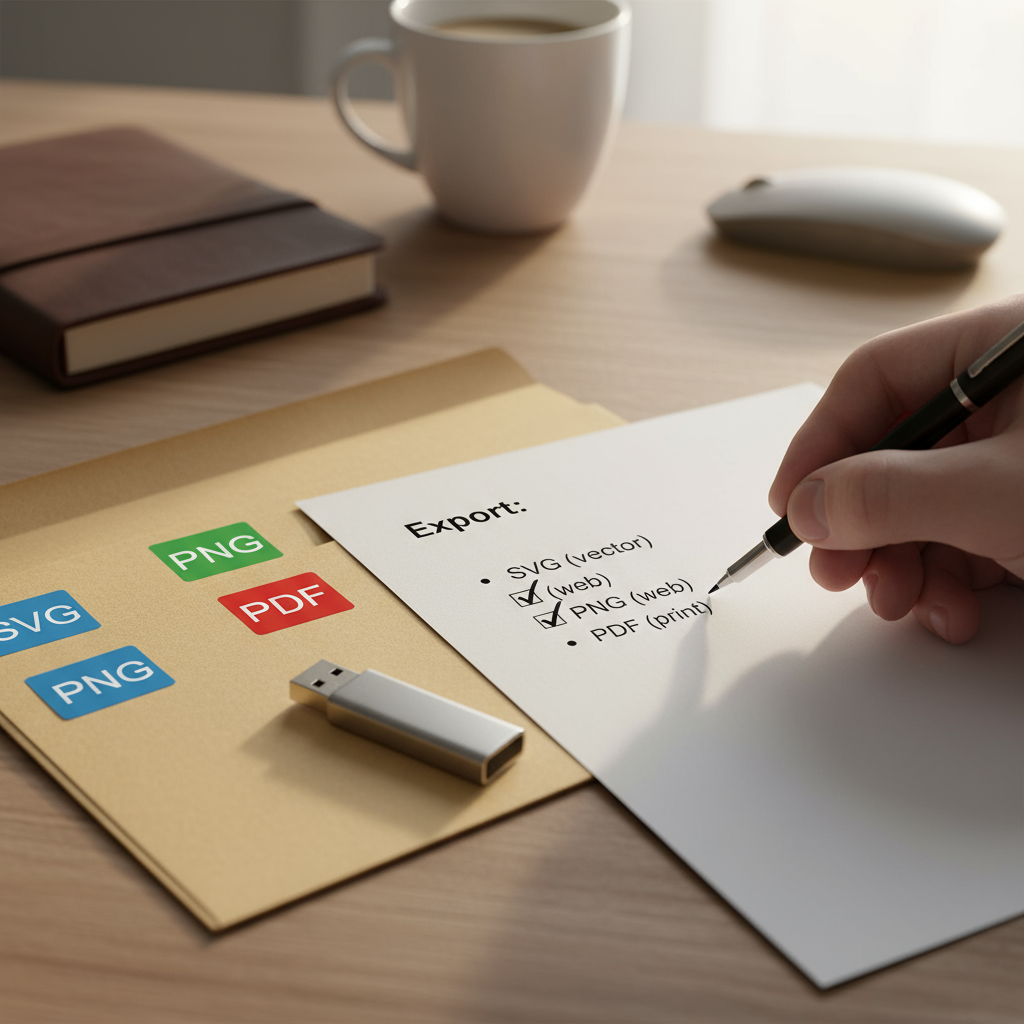Canva vs Figma vs Lovart: Best Logo Design Platform in 2025

Hey there, design enthusiasts! 👋 Whether you're a seasoned designer or just dipping your toes into the creative waters, choosing the right logo design platform can make or break your branding journey. In 2025, three platforms stand out from the crowd: Canva, Figma, and the new kid on the block, Lovart.
As someone who's spent countless hours exploring these platforms (and maybe a few too many late nights tweaking designs), I'm excited to share this comprehensive comparison to help you find your perfect logo design match. We'll dive deep into features, user experience, pricing, and—most importantly—which platform will give your brand that special sparkle it deserves.
Let's jump right in and explore which platform deserves the crown for best logo design platform in 2025!
Overview: The Design Trifecta of 2025
Before we dive into the nitty-gritty details, let's get acquainted with our three contenders in the Canva vs Figma logo design battle (with Lovart joining the ring). Each brings something unique to the table, so understanding their foundations will help you make an informed choice.
Canva: The People's Champion
Canva has long been the go-to platform for non-designers who need professional-looking graphics without the learning curve. In 2025, Canva continues to dominate with its drag-and-drop simplicity and vast template library.
With over 5 million templates and 141+ million stock assets, Canva makes logo design accessible to everyone. Its intuitive interface allows users to create social media graphics, presentations, and—you guessed it—stunning logos in minutes rather than hours.
- Perfect for: Small businesses, entrepreneurs, content creators, and marketing teams
- Key strengths: Ease of use, vast template library, quick results
- Notable update: Magic Design AI now offers enhanced logo generation capabilities

Figma: The Professional's Playground
While Canva focuses on simplicity, Figma embraces the complexity that professional designers crave. This vector-based design tool has become a staple for UI/UX designers and teams working on sophisticated visual identities.
Figma's collaborative environment allows for real-time co-editing, extensive customization, and precise control over every pixel of your logo design. It's the Swiss Army knife of design tools, offering everything from wireframing to prototyping.
- Perfect for: Design teams, professional designers, tech-savvy creatives
- Key strengths: Advanced design tools, collaboration features, precision
- Notable update: Figma Make, an AI-driven prototyping tool, now enhances logo iteration
Lovart: The AI Design Revolution
Enter Lovart, the revolutionary AI design agent that's redefining what's possible in logo creation. Unlike traditional design platforms, Lovart acts as your personal design partner, understanding your brief, researching references, and making expert-level decisions autonomously.
Lovart doesn't just generate pretty visuals—it thinks like a professional designer. Its AI capabilities extend beyond simple image generation to full brand identity development, including logos, color palettes, typography choices, and even animated versions of your logo.
- Perfect for: Innovators, forward-thinking businesses, design experimentalists
- Key strengths: AI-driven design thinking, multi-format outputs, design agent approach
- Notable feature: ChatCanvas for human-AI co-creation
User Interface and Experience: Finding Your Design Comfort Zone
When comparing Canva vs Figma for logo design, the user interface makes a world of difference—especially if you're not a design pro. Let's see how our contenders stack up in terms of usability and learning curve.
Canva: Simplicity at Its Finest
Canva's interface feels like your friendly neighborhood design tool—welcoming, approachable, and instantly familiar. The platform greets you with clear categories, recommended templates, and a drag-and-drop canvas that practically holds your hand through the design process.
Even if you've never designed anything before, Canva's intuitive layout makes logo creation feel like assembling pieces of a puzzle. Everything is where you expect it to be, with minimal technical jargon to confuse newcomers.
Canva scores an impressive 4.7/5 for ease of use according to Software Advice—a testament to its user-friendly approach.
Figma: Powerful but Steeper Learning Curve
Figma's interface is like stepping into a professional design studio—comprehensive, feature-rich, and decidedly more technical. While organized thoughtfully, it presents a daunting array of tools that can overwhelm beginners.
The platform rewards those who invest time in learning its capabilities, but expect to spend some hours watching tutorials before creating your first logo. For designers familiar with vector tools, however, Figma feels like coming home.
With a 4.5/5 ease-of-use rating, Figma remains accessible despite its professional-grade toolkit.

Lovart: Conversation-Driven Design
Lovart turns the traditional interface paradigm on its head with its conversation-first approach. Instead of navigating toolbars and panels, you simply tell your AI design agent what you're looking for in plain language.
The ChatCanvas feature creates a shared workspace where you can mark areas of interest, leave notes, or sketch rough ideas—and Lovart interprets your intent. It's like having a mind-reading design assistant who anticipates your needs.
This novel approach makes logo design feel more like a creative dialogue than a technical process, effectively eliminating the learning curve for non-designers.
| Platform | Interface Style | Learning Curve | Best For |
|---|---|---|---|
| Canva | Template-based, drag-and-drop | Minimal (1-2 hours) | Beginners, quick projects |
| Figma | Professional, tool-centric | Significant (1-2 weeks) | Detailed, precise work |
| Lovart | Conversational, AI-driven | Almost none (minutes) | Innovative, explorative design |
Logo Design Capabilities: Crafting Your Brand Identity
Now let's tackle the heart of the matter—how do these platforms actually perform when it comes to designing logos? After all, canva vs figma logo creation capabilities determine which platform deserves your time and investment.
Canva Logo Design: Quick, Clean, and Convenient
Canva excels at providing a streamlined path to a finished logo. With thousands of pre-designed logo templates organized by industry, style, and color scheme, you can have a professional-looking result in minutes.
While Canva may not offer the depth of customization that professional designers crave, it compensates with speed and accessibility. Its built-in elements—like icons, shapes, and typography options—are curated to work well together, helping you avoid design disasters.
- Strength: Excellent for creating simple, clean logos with minimal fuss
- Limitation: Less flexibility for completely custom designs
- Perfect for: Small businesses needing a quick, professional logo solution
Figma Logo Design: Precision and Creative Freedom
Figma's approach to logo design is like having a blank canvas and a professional art studio at your disposal. Its vector tools allow for precise shape creation and manipulation, making it ideal for crafting unique, scalable logos from scratch.
The platform's component system enables designers to create variations and iterations efficiently, testing how logos perform across different contexts and sizes. Advanced typography controls and color management tools ensure your brand identity remains consistent.
- Strength: Unmatched precision and control over every aspect of the design
- Limitation: Requires design knowledge to utilize effectively
- Perfect for: Professional designers creating comprehensive brand systems

Lovart Logo Design: AI-Driven Brand Identity
Lovart reimagines the logo design process through an AI lens. Rather than starting with templates or blank canvases, you begin with a conversation about your brand values, target audience, and visual preferences.
The AI design agent then generates not just a single logo but an entire visual identity system, complete with variations, applications, and even animated versions. What sets Lovart apart is its ability to explain its design decisions, helping you understand why certain elements work better than others.
- Strength: Generates comprehensive brand identity systems, not just logos
- Limitation: Less direct control over the creative process
- Perfect for: Businesses seeking innovative, AI-enhanced brand identities
The Logo Design Process Comparison
When we look at the canva vs figma logo design process (and throw Lovart into the mix), we see three distinct approaches:
| Platform | Design Approach | Time to Completion | Uniqueness Factor |
|---|---|---|---|
| Canva | Template modification | 15-30 minutes | Moderate (risk of similar logos) |
| Figma | Custom creation | Hours to days | High (completely custom designs) |
| Lovart | AI co-creation | 30-60 minutes | Very high (AI-generated uniqueness) |
Template Libraries and Resources: Your Creative Starting Point
Templates and design resources can dramatically accelerate your logo creation process. Let's examine what each platform brings to the table in this crucial area of canva vs figma logo design capabilities.
Canva's Vast Template Collection
Canva's template library is nothing short of impressive, with over 5 million templates across all categories and thousands specifically for logo design. These templates span industries, aesthetics, and use cases, providing almost limitless starting points.
The platform's free tier offers access to 2.2 million templates, while the Pro plan unlocks the full library. Templates are professionally designed and easily customizable, allowing you to swap colors, fonts, and elements while maintaining visual harmony.
- Template quantity: 5+ million total (thousands for logos)
- Quality and variety: High, with regular additions
- Customization ease: Very simple, drag-and-drop
Figma's Community and Professional Resources
Figma takes a different approach to templates, focusing on quality over quantity. The platform offers around 300+ professional templates, including logo design systems, brand guidelines, and identity packages.
Where Figma truly shines is its community resources. The Figma Community contains thousands of files shared by professional designers, many of which include comprehensive logo systems and branding kits that go far beyond basic templates.
- Template quantity: 300+ official, thousands in community
- Quality and variety: Very high, professional-grade
- Customization ease: Requires some technical knowledge

Lovart's AI-Generated Templates
Lovart reinvents the concept of templates altogether. Rather than offering static starting points, it generates custom templates based on your specific needs, references, and brand requirements.
The platform's AI understands design principles and trends, creating tailored suggestions that feel more like collaborating with a professional designer than selecting from pre-made options. Each template it generates is unique to your brand, eliminating concerns about logo similarity.
- Template quantity: Infinite (AI-generated)
- Quality and variety: Exceptional, custom-created
- Customization ease: AI handles complexity, you direct the vision
When comparing Canva vs Figma for logo design templates, Canva offers breadth while Figma delivers depth. Lovart, meanwhile, personalizes the entire template concept.
Collaboration Features: Designing Together in 2025
Logo design rarely happens in isolation. Whether you're working with colleagues, clients, or stakeholders, collaboration features can streamline the feedback and approval process. Let's see how our platforms facilitate teamwork.
Canva: Simple Sharing and Team Management
Canva makes collaboration accessible with straightforward sharing options. On the Teams plan, you can invite team members to edit documents simultaneously, though the real-time co-editing experience isn't as refined as some competitors.
The platform excels at simplifying approval workflows with its commenting system and permission settings. For businesses creating logos and branded materials across departments, Canva's Brand Kit ensures consistency by centralizing approved assets.
- Real-time collaboration: Available on Teams plan ($14.99/month for 5 users)
- Commenting and feedback: Simple and intuitive
- Version control: Basic history and restoration
Figma: The Collaboration Powerhouse
Collaboration is where Figma truly excels, offering free real-time co-editing that feels almost magical in its responsiveness. Multiple team members can work on a logo simultaneously, with cursor tracking showing exactly what others are doing.
Figma's commenting system is robust, allowing for precise feedback on specific elements. The platform also offers audio comments, branching for exploring multiple design directions, and detailed version history for tracking changes over time.
- Real-time collaboration: Included in free plan, enhanced in paid tiers
- Commenting and feedback: Advanced, with audio options and specific targeting
- Version control: Comprehensive history and branching capabilities

Lovart: Collaborative AI Design
Lovart brings a fresh perspective to collaboration by making the AI itself your primary collaborator. The platform allows team members to join the conversation with the AI design agent, creating a unique three-way dialogue between humans and artificial intelligence.
Its standout feature is the ability to explain design decisions and suggest alternatives based on collaborative feedback. This educational component helps teams develop their design thinking while creating their logo.
- Real-time collaboration: Human-AI-human collaboration model
- Commenting and feedback: AI responds to and implements feedback directly
- Version control: AI manages iterations and maintains context between versions
| Platform | Collaboration Model | Best For |
|---|---|---|
| Canva | Sequential with some overlap | Simple approval workflows |
| Figma | Simultaneous real-time editing | Design teams working in tandem |
| Lovart | Human-AI partnership | Creative dialogue and exploration |
AI Capabilities: The Future of Logo Design
In 2025, AI has become an integral part of design tools, transforming how we create logos and brand identities. When we look at canva vs figma logo design through an AI lens, we see significant differences in approach and capabilities.
Canva: AI for Accessibility
Canva's Magic Design AI focuses on making design more accessible to non-designers. It can generate logo options based on simple prompts, automatically remove backgrounds, and suggest complementary color schemes.
The platform's AI is particularly useful for quick iterations and inspiration, allowing users to explore different directions without starting from scratch. While not the most sophisticated AI system, it effectively lowers the barrier to entry for logo creation.
- Text-to-design generation: Basic logo concepts from text prompts
- Image editing: Background removal, basic photo enhancement
- Design assistance: Color suggestions, layout improvements

Figma: AI for Workflow Enhancement
Figma's AI approach centers on enhancing designer productivity rather than replacing design skills. Figma Make converts text commands into design elements, while other AI features help organize layers, translate content, and summarize feedback.
These tools act as accelerators for professional designers, handling repetitive tasks while leaving creative decisions in human hands. It's less about generating logos from scratch and more about streamlining the creation process.
- Workflow automation: Converting text to design elements, organizing assets
- Productivity tools: Layer renaming, content translation
- Collaborative assistance: Summarizing feedback, suggesting iterations
Lovart: AI as Design Partner
Lovart represents the cutting edge of AI design, positioning artificial intelligence as a true creative partner rather than just a tool. Its AI design agent approaches logo creation holistically, understanding brand contexts, researching visual references, and making informed design decisions.
The platform can generate complete logo systems with variations, applications, and animations—all while explaining its creative process. This combination of generation capabilities and design thinking sets Lovart apart in the AI landscape.
- Comprehensive design thinking: AI that understands brand context and audience
- Multi-format creation: Generates static, animated, and 3D logo versions
- Explainable AI: Provides rationale behind design choices
The AI Impact on Logo Design
The canva vs figma logo design comparison takes on new dimensions when we consider how AI is reshaping both platforms. Meanwhile, Lovart is building on these foundations to create something entirely new.
| Platform | AI Role | AI Sophistication | Human Input Required |
|---|---|---|---|
| Canva | Assistant | Moderate | Significant direction and refinement |
| Figma | Productivity enhancer | High (for specific tasks) | Primary creative control |
| Lovart | Creative partner | Very high | Vision direction and feedback |

The Final Verdict: Which Platform Takes the Crown?
After our deep dive into canva vs figma logo design capabilities—with Lovart adding an AI wildcard to the mix—it's time to crown our winners in various categories.
Category Champions
- Ease of Use: Canva takes this category with its intuitive interface and low barrier to entry.
- Design Precision: Figma wins for its professional-grade tools and vector capabilities.
- Innovation: Lovart leads the pack with its revolutionary AI design approach.
- Value for Money: Canva offers the most features per dollar for casual users.
- Collaboration: Figma's real-time editing capabilities make it the collaboration king.
- AI Capabilities: Lovart's design agent approach puts it miles ahead in AI integration.
The Best Overall Logo Design Platform in 2025
The "best" platform ultimately depends on your specific needs, but if we're crowning an overall winner:
For most users seeking the best balance of accessibility, professional results, and value, Canva remains the top choice for logo design in 2025. Its combination of templates, ease of use, and improving AI features makes it the most versatile option for the widest audience.
That said, professional designers will continue to prefer Figma's precision, while innovation-focused brands might find Lovart's AI-driven approach worth the premium price.
Looking Forward: The Evolving Logo Design Landscape
As we progress through 2025, the lines between these platforms continue to blur. Canva is adding more professional features, Figma is simplifying certain aspects of its interface, and Lovart is pushing the boundaries of what AI design can achieve.
The future of logo design likely involves a hybrid approach, combining the accessibility of Canva, the precision of Figma, and the AI innovation of Lovart. Whichever platform you choose today, stay open to how these tools evolve—your perfect logo design solution might look different a year from now.
Have you tried any of these platforms for logo design? Which features matter most to you in choosing a canva vs figma logo design tool? Share your experiences in the comments below!

공유하기